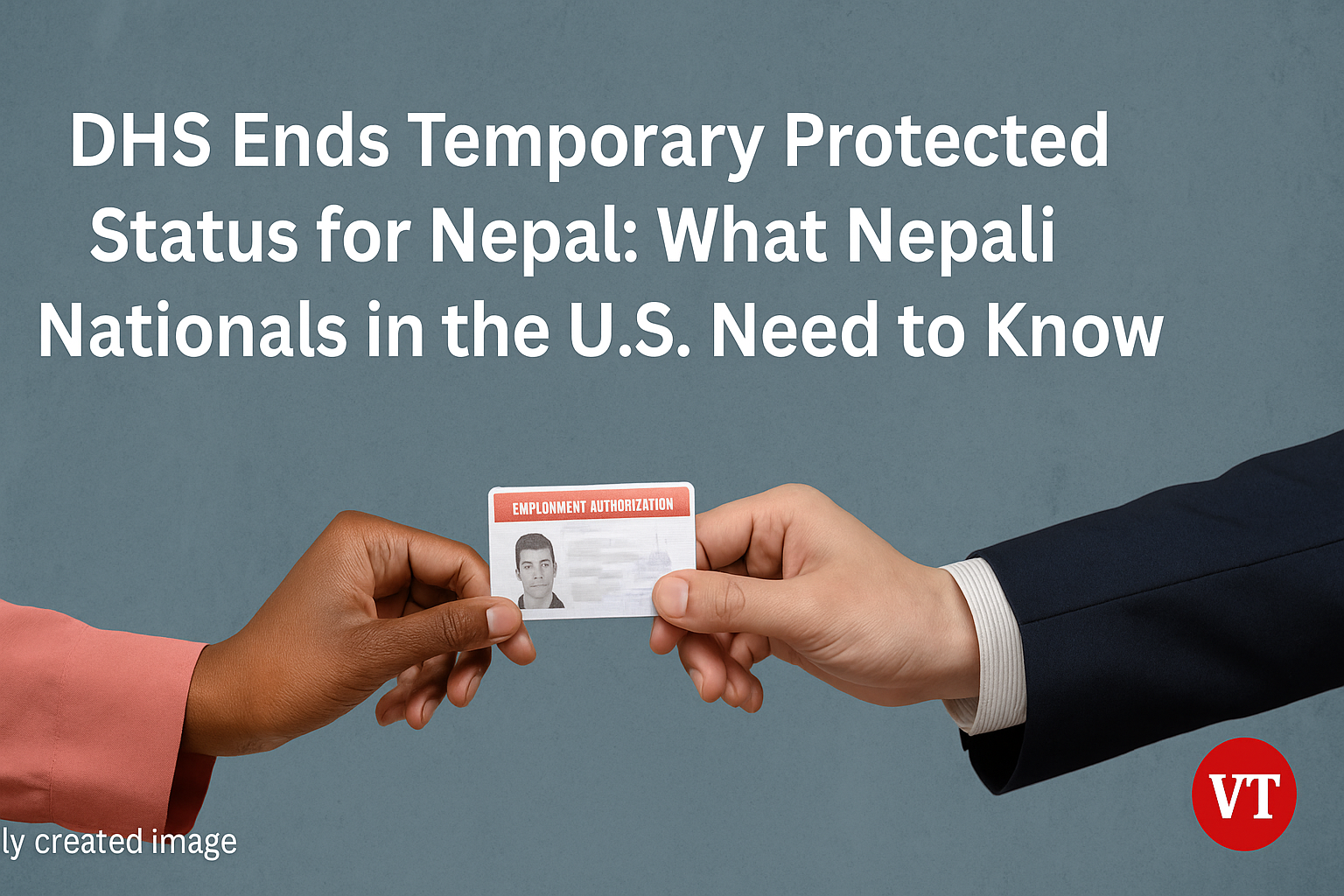- DHS announced the termination of TPS for Nepal, effective August 5, 2025.
- Secretary Kristi Noem cited improved conditions in Nepal as the reason for termination.
- TPS was originally granted in 2015 after the devastating earthquake in Nepal.
- TPS holders were granted legal work authorization and deportation protection.
- Thousands of Nepali families now face uncertainty, including job loss, legal limbo, and separation risks.
The Department of Homeland Security (DHS) has officially announced the termination of Temporary Protected Status (TPS) for Nepal. According to a Federal Register notice released today, TPS protections for Nepal will formally end at 11:59 p.m. on August 5, 2025.
This decision comes after DHS Secretary Kristi Noem conducted a comprehensive review of current country conditions in consultation with interagency partners. The Secretary concluded that conditions in Nepal no longer warrant the continuation of TPS protections under the Immigration and Nationality Act.
Why TPS for Nepal Is Being Terminated
The TPS program is intended to offer temporary humanitarian protection for foreign nationals when returning home would be unsafe due to conflict, disaster, or other extraordinary conditions. DHS stated that the improved security and recovery progress in Nepal no longer meets the legal criteria required to extend TPS.
While acknowledging ongoing economic and governance challenges in Nepal, DHS determined that those issues are not sufficient to justify a continued humanitarian designation under U.S. immigration law.
Background: TPS for Nepal Since the 2015 Earthquake
Nepal received TPS designation in June 2015, following the devastating 7.8-magnitude earthquake that killed nearly 9,000 people and displaced hundreds of thousands. The designation provided thousands of Nepali nationals already in the U.S. with a temporary legal status, preventing deportation and allowing them to legally live and work in the country.
Over the last decade, TPS protections were extended multiple times, allowing Nepali immigrants to contribute to the U.S. economy and build family lives. Many TPS recipients became essential workers in healthcare, hospitality, transportation, and caregiving sectors.
What Benefits Did Nepali TPS Holders Receive?
Under TPS, Nepali nationals were granted:
- Protection from deportation as long as they maintained their TPS status
- Legal authorization to work in the U.S. using an Employment Authorization Document (EAD)
- Travel permissions under advance parole in some cases
- Eligibility to obtain Social Security numbers and certain state-issued IDs
These benefits enabled TPS recipients to participate fully in the U.S. workforce, open businesses, and support family members in both the U.S. and Nepal.
What Happens to TPS Holders with U.S.-Born Children?
Many Nepali TPS holders have children who were born in the United States and are therefore U.S. citizens by birth. However, the parents’ loss of TPS places these mixed-status families in a precarious legal situation. U.S.-born children may remain in the country, but their parents would no longer have lawful status unless they qualify for another visa or relief.
This could lead to family separations or force entire families to leave the U.S. despite the children’s legal citizenship. Immigration advocates warn that such policies create long-term harm for U.S. citizen children, who may lose access to healthcare, education, and social stability if forced to relocate to a country they’ve never known.
Implications for Nepali Families Losing TPS
The termination of TPS will have far-reaching consequences for over 14,000 Nepali TPS beneficiaries and their families. Many face job loss, health coverage gaps, and emotional strain.
Families may be forced to separate, especially when one member is undocumented and others are U.S. citizens. The looming uncertainty has already begun to affect the mental health of many Nepali TPS holders, who report increased anxiety, depression, and distress over their future.
Next Steps for Nepali TPS Holders
DHS is advising all Nepali TPS beneficiaries to prepare to depart the United States by August 5, 2025, unless they qualify for another immigration status. Those intending to leave may use the CBP One mobile application to assist with travel documentation.
Legal experts strongly recommend consulting an immigration attorney to explore alternative options, such as asylum, family petitions, or employment-based pathways. Accredited nonprofits may also provide low-cost legal assistance.
A global media for the latest news, entertainment, music fashion, and more.















